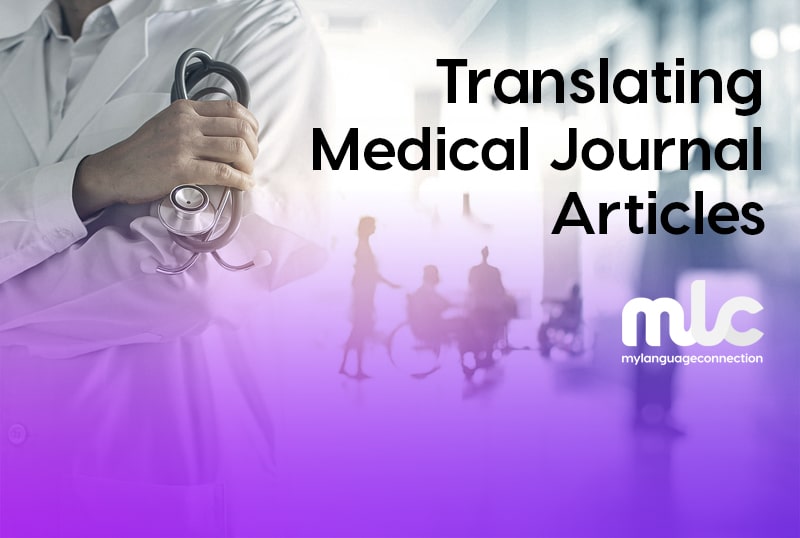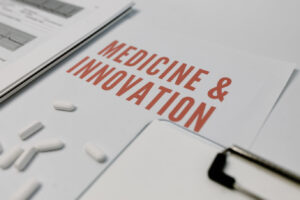Translating medical journal articles is a crucial role. It must be done accurately and within regulatory standards to ensure accuracy and relevance of the translated information.
The medical community is highly diverse consisting of people from different races, ethnic and linguistic groups, and regions. This makes effective communication within the medical industry extra challenging. Why is this so important? Because human lives are at risk if there is any wrong information or miscommunication in the release of medical journals or reporting of new research and case studies!
 Types of Medical Document Translation
Types of Medical Document Translation
Before delving into the challenges of translating medical journal articles, there is a long list of documents and texts that are often translated. Here are a few examples:
- Dissertations
- Case Studies
- Dosage Labels
- Case Notes
- Lab Reports
- Brochures
- Protocols
- Catalogues
- Medical Reports
- Forensic Summaries
- Press Releases
- Insurance Documents
- Test and Results Analysis
The same standard and quality control procedures must be implemented for any of these types of documents and texts.
Tips to Manage Medical Journal Translation
Any form of medical translation job entails a set of risks. Some are minor risks while most of them are serious issues that must be addressed promptly and efficiently.
One of the best ways to manage the risks associated with medical journal translation is to get the translators involved from the start. They need to understand the context and content of the medical journal instead of stepping in at the end. This is an important procedure before the text is localised into another language. Getting the translator involved early on also ensures a smooth and efficient process.
It is also important to identify the “type” of document you are dealing with. Each one requires a different approach as they differ in terms of purpose, length, and context.
Risks of Medical Translation Errors
Accuracy and quality are two of the most important factors that you need to consider when doing your medical translation, or when outsourcing this job to an agency. The level of accuracy is a non-negotiable aspect of medical translation; if the translation isn’t accurate, it leaves room for errors. An error in this setting could mean risking a patient’s health, or life. Those are not good odds to gamble with.
The most common source of error during the translation of medical journal articles is in the abbreviations. When a medical translator is confronted with abbreviations, they need to be extra careful since this is where most errors occur. The translator must be able to match the context with the meaning of the abbreviated terms. The Joint Commission Journal on Quality and Patient Safety published the most commonly mistaken abbreviated terms in a medical setting and documentation, which you should know about.
The way that you can get around the risk of medical error is to hire a specialist in the field. Someone who is versed only with language translation isn’t enough. You need to hire an expert medical translator who has a full grasp of the relevant contexts involved in the medical journal or articles to be translated.
If you hire an incompetent translator, it can jeopardise the well-being of patients. Some of the medical errors that can result from this negligence include:
- Complications due to faulty diagnosis or treatment
- Poor healthcare service provided to patient
- Delayed treatment
- Failure to provide timely diagnosis
- Legal costs due to medical lawsuits on negligence
Tips for Quality Medical Journal Translation
Translating medical journal articles is no easy feat. Take these steps to ensure quality medical translation, especially when publishing and circulating medical journal articles.
- Understand the context of the medical journal.
An in-depth knowledge in the medical field and processes is an important quality that a translator must possess. However, equally if not more important is the ability to understand the cultural differences, the context behind the study or medical journal, and the existing language barriers.
A medical translator who is able to acknowledge and understand the role that each of these factors play into the translation is able to use that in the actual translation of the medical journal. They must also have a full understanding of the local market that the texts are being targeted for.
- Compliance and continuous learning.
There are international certifications that medical translators must fulfil in order to show their competence in their specific field of language translation. The compliance standards and regulations for medical translation are continuously evolving to match the requirements of the field.
 Consider this when hiring quality medical translators. Make sure that you work with professionals who are not only certified, but have shown deep commitment to seek further learning that will equip them with the skills and knowledge to deliver the best translation services.
Consider this when hiring quality medical translators. Make sure that you work with professionals who are not only certified, but have shown deep commitment to seek further learning that will equip them with the skills and knowledge to deliver the best translation services.
- Adequate medical research.
Medical journal articles are one of the most complex types of documents that will require translation in the medical industry. The translator must work on this document by assuming the same mindset of the people who conducted the research and wrote the original medical journal. This is only possible with adequate research and analysis to fully understand the scope of the study, its purpose, and the conclusion of the research.
To succeed with medical journal translation, a translator must be equipped with three crucial tools: hardware (books and medical documents providing background information on the published journal), software (access to electronic files), and people-ware (the human context of the medical journal).
- Efficient workflow method.
Medical texts like journals and articles are complex. It requires a methodical approach and a standardised process to ensure quality control and precision at every step of the job.
An efficient workflow method in translating medical journal articles involves extracting the text from the main source – original medical journal document. The next step is to analyse the tone and voice of the text. The third step is the actual translation and the same format must be kept intact as the original source. The final stage involves implementing any quality control strategies to ensure that the translation is done accurately and precisely.


